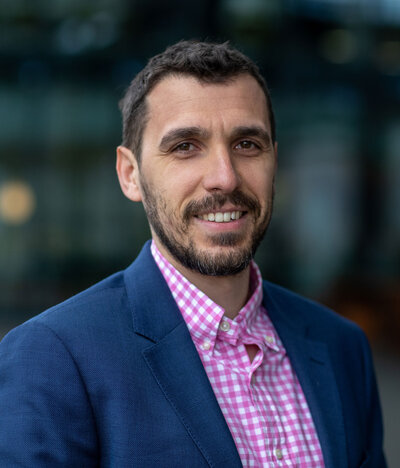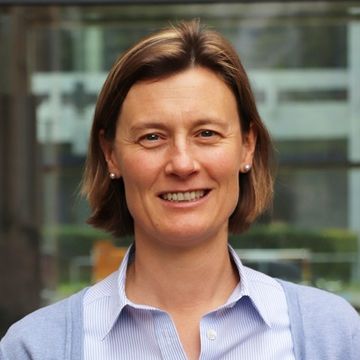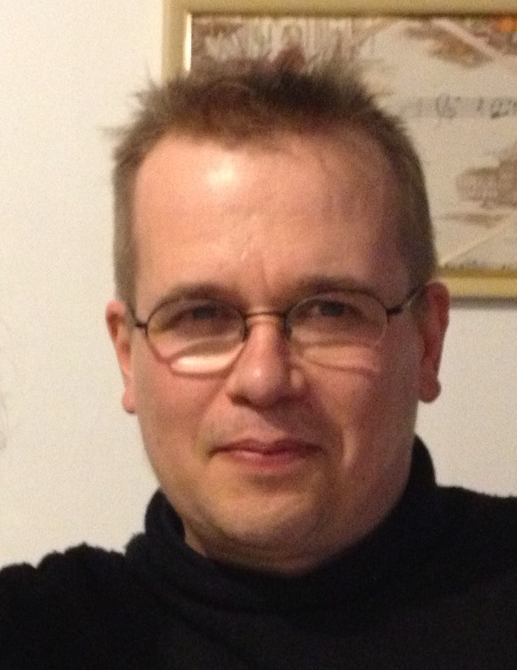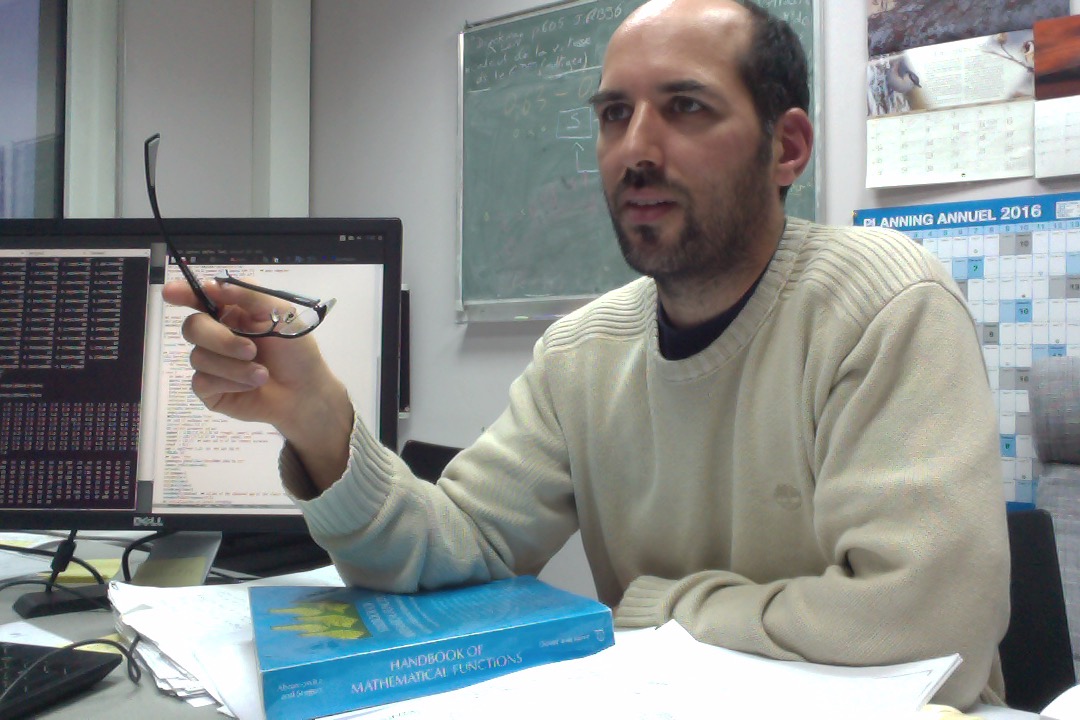- Title:
Planetary population synthesis with volatile delivery and atmospheres - Abstract:
I will present the results of planetary accretion calculations driven by pebble accretion within the protoplanetary disc. The model includes the composition of the pebbles and how this changes when the pebbles pass the water ice line. I also take into account the loss of volatiles from the pebbles while they are accreted. For rocky planets forming in the inner regions of the protoplanetary disc, volatiles are partitioned between core, mantle and atmosphere using experimentally determined partition and dissolution coefficients. This allows us to calculate the pressure and composition of the outgassed atmosphere. I will highlight implications of this composition for origin-of-life scenarios. - Affiliation:
Lund Observatory in the Department of Astronomy and Theoretical Physics at Lund University (Sweden)
- Title:
A few tips for designing sound models of microbial populations - Abstract:
The growing complexity of bioprocesses has led to the increasing use of mathematical models for tasks such as process design, control and optimisation. These models generally describe the coupling between microbial population dynamics and the transformation of substrates into products, with equations derived from mass balances and empirical kinetics. Due to their non-linear nature, biological models intrinsically capture the dynamic and adaptive characteristics of living systems. However, attempts to incorporate full biological details into these models can lead to excessive complexity, compromising model calibration and practical applicability. Consequently, the main challenge for modellers is to strike a balance between model complexity and ease of use. A well-designed model needs to be tailored to specific objectives, varying according to the intended application and environmental conditions. A universal model that can meet all possible needs is not necessarily the most effective approach. In this talk, we offer advice to guide the modeller in designing a more robust model, highlighting some of the pitfalls from model design, calibration and validation through to dissemination to the scientific community. - Affilitation:
Team Biocore, Inria Center at University Côte d’Azur (France)
- Title:
Understanding pedestrian physics: from large-scale measurements to generative AI - Abstract:
Achieving a quantitative understanding and modelling of the dynamics of pedestrian crowds is not only a primary societal need, but also an outstanding fundamental challenge connected with the statistical physics of active flowing matter. Developments in automated vision over the last 15 years have given us increasing possibilities to measure the crowd behaviour at larger and larger spatial scales and with finer and finer details. We can now have access to individual tracking and biomechanics features in real-life conditions, anonymously, and even at high densities. Data acquisition with 24/7/365 schedules enables datasets including millions of trajectories, resolving common and rare events. These open big-data investigations aiming at statistical features emerging from universal physical properties of pedestrian dynamics.
In this contribution, I will discuss some of the current possibilities in real-life data acquisition at large scales. Special attention will be on our works on 3D depth map data. I will show how large datasets enable statistical investigations from hydrodynamic aspects (probabilistic fundamental diagrams) to conditioned wayfinding statistics, from dynamical fluctuations to geometry aspects. I’ll present our current modelling works, hinging on bottom-up Langevin-like differential approaches, top-down generative AI, and in between the two. On all these points I will share my view on current and forthcoming opportunities and challenges. - Affiliation:
Department of Applied Physics and Science Education at Eindhoven University of Technology (Netherlands)
- Title:
Data-driven approaches for pedestrian dynamics - Abstract:
In this talk, we present a hierarchy of models enabling to consider different levels of simulation accuracy. Particularly, connections between data-driven and physics-based models will be discussed in the case of pedestrian flows in corridors. - Affiliation:
Scientific Computing Research Group, within the School of Business Informatics and Mathematics at the University of Mannheim (Germany).
- Title:
Breakup of small aggregates in turbulence - Abstract:
The breakup of solid aggregates dispersed in gas or liquids is a phenomenon of relevance for a broad variety of applications, from environmental and engineering sciences to pharmaceutical or food industries. If the turbulent suspension is dilute, breakup is only due to the hydrodynamical stresses experienced along the trajectories in the flow. I will review a few studies focusing on the role of shear and drag stresses on the breakage of aggregates, and discuss simple general models for the breakup rate, that can be applied irrespective of the specific chemical/mechanical properties of the aggregates under exam. Finally, I will show that a neural network – which includes geometrical features of the aggregate- can be trained to classify aggregates that break or not, once the turbulent velocity gradients statistics is known. - Affiliation:
CNR NANOTEC, Institute of Nanotechnology (Italy)
- Title:
Crowd motion modeling at different scales - Abstract:
We propose to investigate the compared relevance of crowd motion models at different scales: microscopic (individuals are represented by discs), macroscopic (the overall crowd is represented by a density field), and « lumped » (the distribution of the crowd over a domain is coarsely represented by a finite number of quantities, which are the headcounts in particular zones of interest).
Like in nonlinear fluid mechanics, the multiscale character of the phenomena raises a deep challenge : comparison with data can only be made at a coarse level, whereas some local phenomena, which affect the overall behavior, can only be captured by microscopic models.
We propose to address these issues, in particular in the context of evacuation processes. - Affiliation:
Mathematics Orsay, University Paris Orsay (France)
- Title:
The challenges of ocean navigation - Abstract:
Ocean navigation is notoriously difficult, with complex currents and the absence of landmarks conspiring to create considerable uncertainty of one’s position. The tragic loss of almost 2000 lives near the Isles of Scilly in 1707 offered a stark reminder, sparking the 1714 Longitude Act that encouraged a solution to this problem. John Harrison’s extraordinary marine chronometer subsequently heralded an age of safer human seafaring. Many marine animals undertake spectacular migrations, despite their lack of such technological aids: marine turtles undertake long distance solo migrations to remote island nesting beaches; whales routinely navigate across an ocean basin between feeding and breeding grounds. In this talk I will describe some modelling of these phenomena. In the context of turtles, I will explore the challenge faced by a solo navigator as it attempts to return to a small target in the middle of the ocean and show how exploiting multiple sources of navigating information proves optimal. In the context of whale navigation I will consider the role played by collective information and the degree to which this can improve navigation, as well as the particular challenges faced by whales as our oceans become increasingly polluted by noise. - Affiliation:
Interuniversity Department of Regional and Urban Studies and Planning (DIST), Politecnico di Torino (Italy)
- Title:
Bridging collective motion models and population models: a data-driven approach - Abstract:
We will first use a data-driven approach to model collective behavior of sheep flocks. Then, we will extend this model to understand how sheep exploit the environment and identify optimal foraging strategies. Finally, we will incorporate birth and death processes to arrive to a population model. We will learn how collective behaviors shape the population size. - Affiliation:
Laboratory of Theoretical Physics and Modelling, Cergy University (France)
- Title:
Leveraging surveillance data for modeling and inferring disease and pest spatiotemporal dynamics - Abstract:
Surveillance data about diseases and pests are primarily collected to inform the sanitary status of territories, draw alerts, and initiate control actions accordingly. They can also be used to model and infer the spatiotemporal dynamics of the responsible organisms. Numerous approaches have been followed with this aim. Throughout case studies, I will present how some of these approaches (Markovian models, partial differential equations, hidden processes, network models, non-stationary dispersal, importance sampling, Bayesian model averaging, Approximate Bayesian computation, and auto-encoders) have been utilized in the mechanistic-statistical framework to produce knowledge about the large-scale dynamics of the plant pathogen Xylella fastidiosa and the plant pest Spodoptera frugiperda. - Affiliation:
Department of Plant Health and Environment, INRAE Avignon (France)








